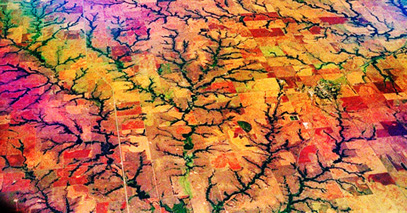 WEAL
WEALNavigating the site:
Categories
On this page there is an example of a matrix or association of categories that depicts ecological knowledge of any place.
Below is a matrix.
It is using the acronym WEAL as the four divisions of an ecological habitat. The matrix here uses
the W to stand for water,
the E to stand for energy,
the A to stand for air (atmosphere) and
the L to stand for land (landscape).
- WEAL and the principle threats diagramed to display how these necessary components work together to form a functionally integrated and healthy habitat.

Matrix of four constituent parts of the habitat:
|
Water |
Energy
Potential & kinetic |
|
|
|
|
|
| Air
|
Land
|
|
|
|
|
|
WEAL is an acronym representing the world's four corners hidden from our view.
Weal:
An acronym based on an Old English word -- weald-- meaning
forest from which our word wealth is derived.
The entire area drained by a particular river system; the
basis for comprehending any area. Sometimes called
basin, springshed, rivershed, or tributary valleys.
Land or Landscape
In
the photograph here it
is obvious that land is a mosaic, or a pattern of different parts. But
the pattern is produced on the land by the physical forces related to
water and air. Inherent in those forces is energy or the capacity of material
objects to undergo changes in conditions or locations over time.
Case:
Indvidual studies that reveal the specific dimensions of physical, ecological, social and moral problems associated with how people use resources.
A case is a story with a particular setting, participating characters and a related and unfolding series of events.
New concepts:
These include cross-boundary pollution, common property resources, comprehensive rivershed planning, ecological services, ecosystem management, systemic thinking and assimilative capacity to old ideas of conservation of natural resources and preservation of biological diversity.
Unless we link land, air and water problems together and comprehend that inefficient use and waste of energy is an underlying cause of our institutional failure to improve our ecological life support system, the future needs of society will not be met by our planets' biological, physical and material wealth.
WEAL
| threats posed to | quantitative | qualitative |
| Water | flow | nutrients |
| Energy | entropy | carbon intensity |
| Air | thermal | pollutants, smog, Nox, Sox |
| Land | density / acre | arable (can be farmed) |
Related lessons:
Science Index | Site Analysis | Population Index | Global Warming Index | Nature Index

